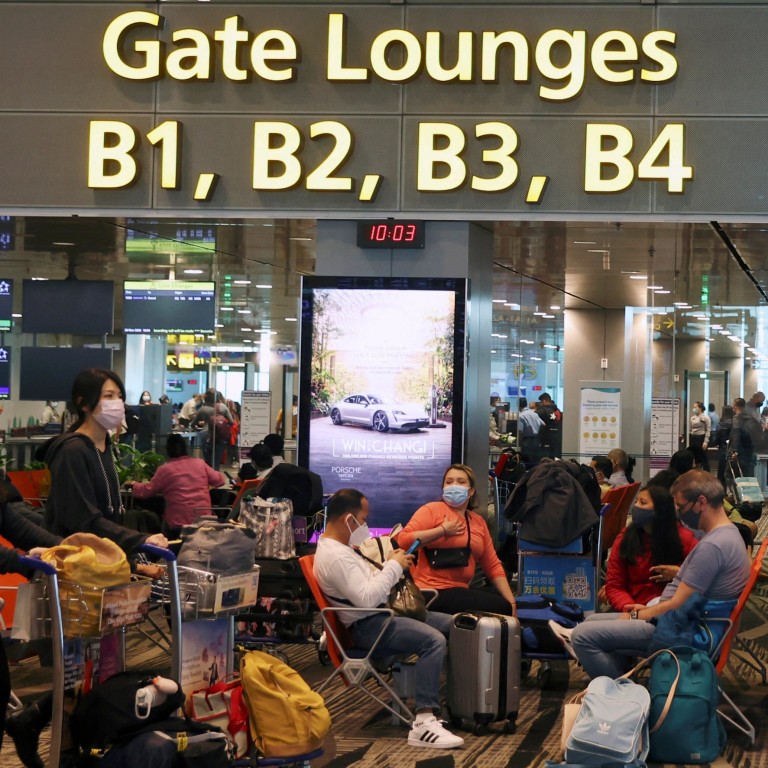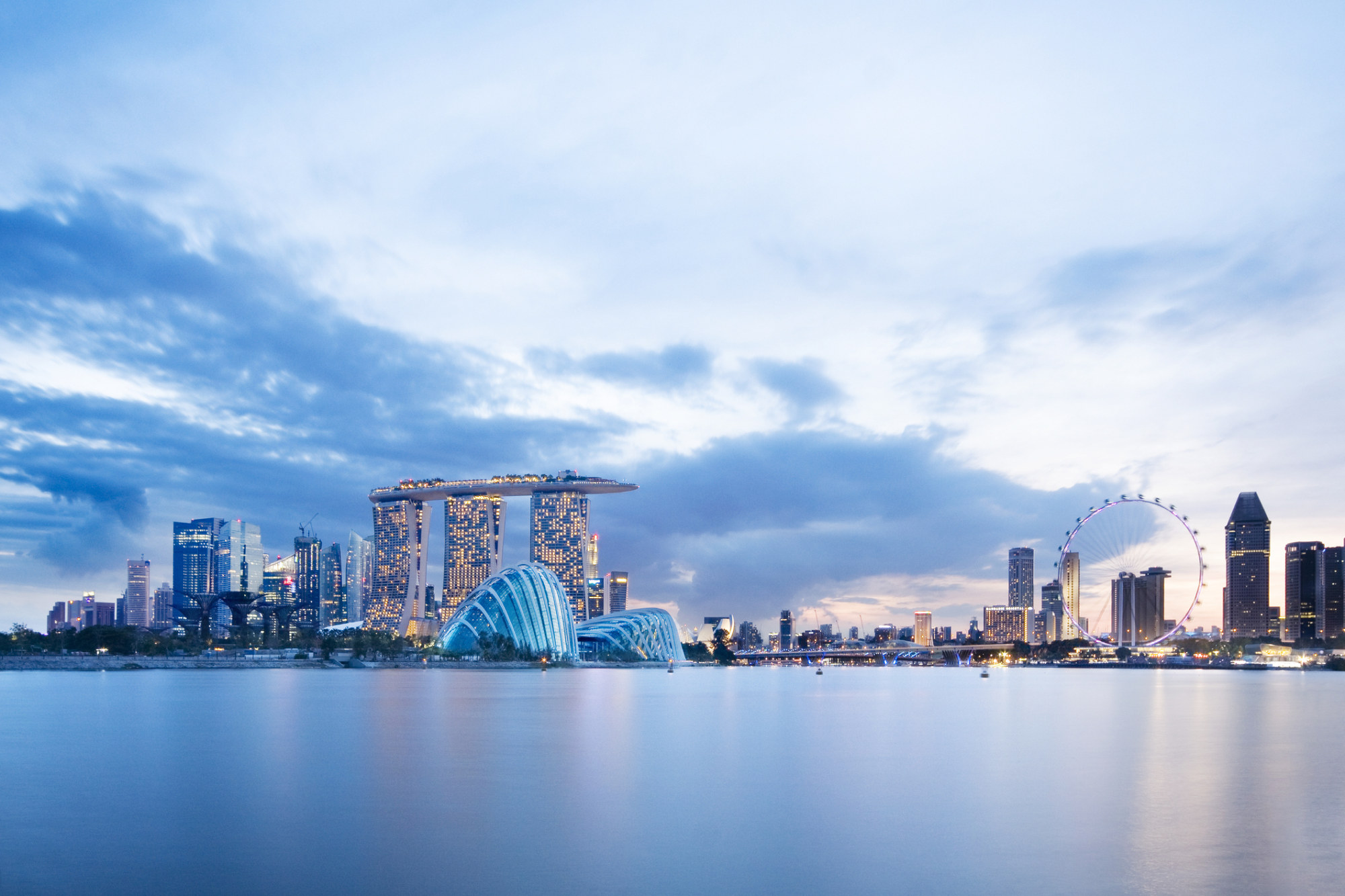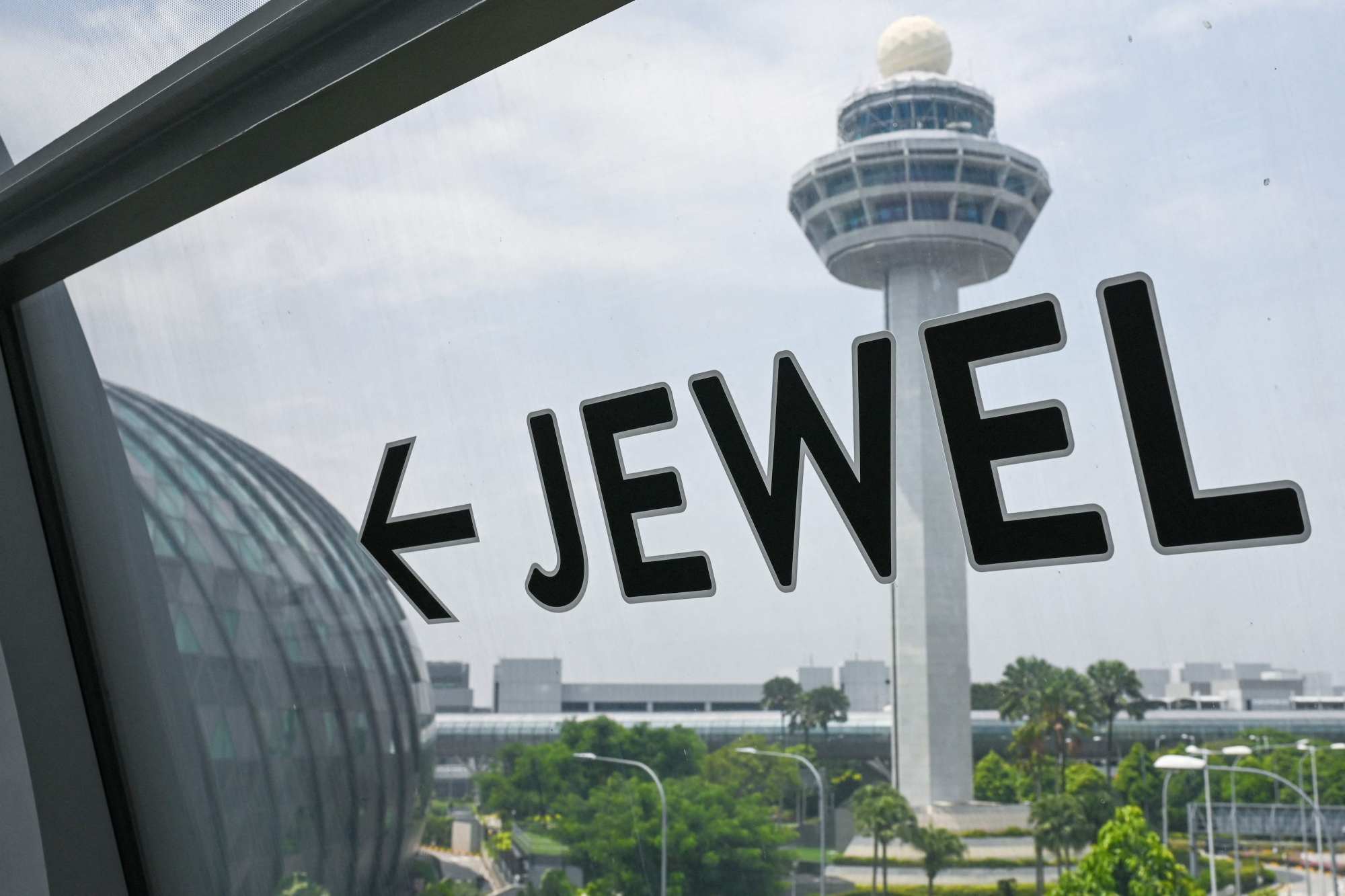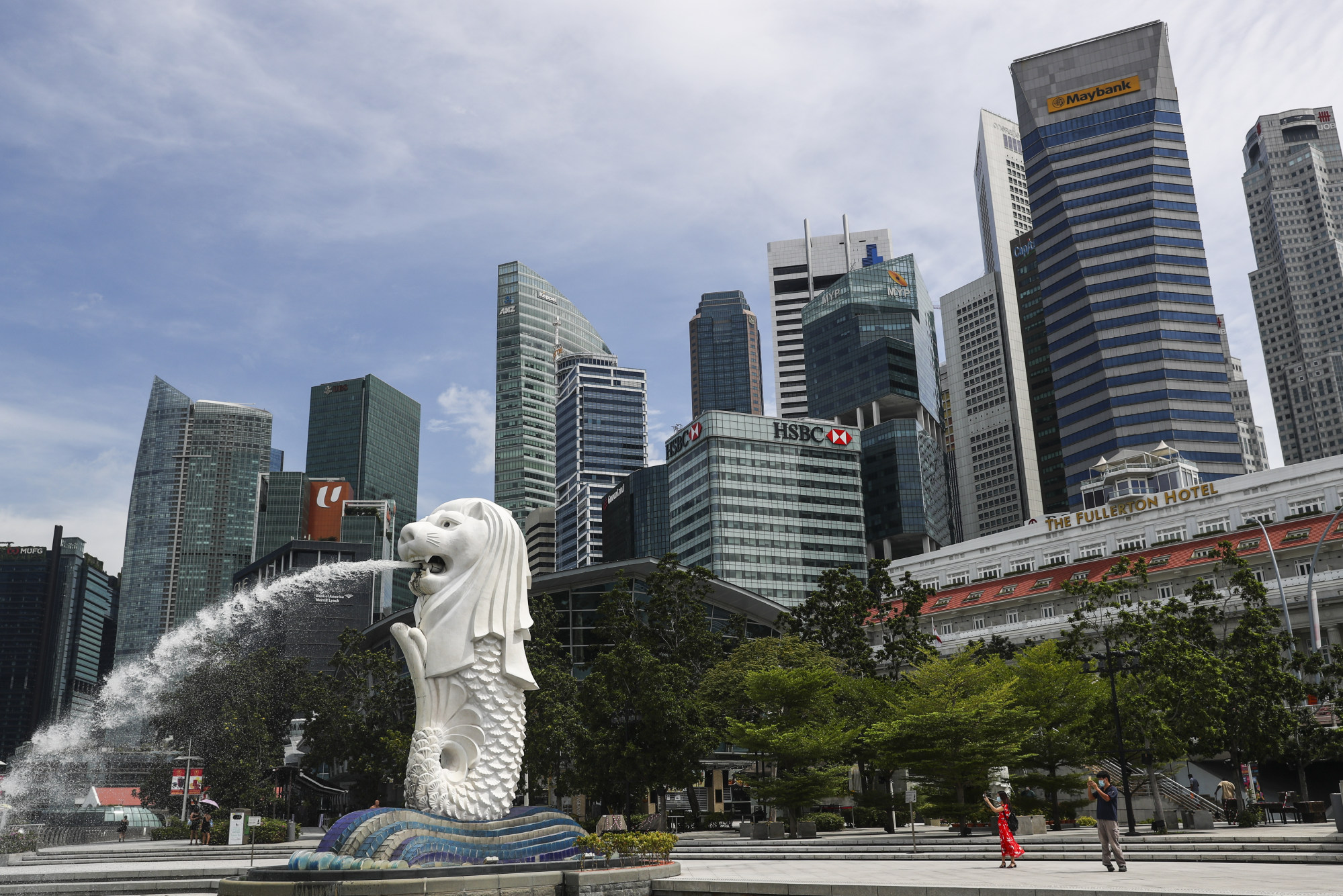
Coronavirus: Singapore citizens dashing to apply for passports as borders reopen
- The number of passport applications has spiked to more than 7,000 a day, peaking at 14,000 – that compares with about 2,000 a day before the pandemic
- The average wait for processing now is at least six weeks from the application time according to Singapore’s Immigration & Checkpoints Authority
Singaporeans are flocking to apply for passports after travel restrictions eased, unlocking pent-up wanderlust after two years of Covid-19 restrictions.
The number of passport applications has spiked to more than 7,000 a day, peaking at 14,000, according to the Immigration & Checkpoints Authority, which described the surge as “overwhelming.” That compares with about 2,000 a day before the pandemic, the ICA said. The average wait for processing now is at least six weeks from the application time, it said.
Asia’s popular tourist destinations from Japan to Thailand are moving to reopen their borders, welcoming back tourists after the latest Covid-19 variant omicron proved to be mild compared to its deadly predecessors. Singapore, itself a well-known attraction, removed pre-departure testing requirements for fully-inoculated visitors from all countries last month.

Local media reported long, snaking queues at the ICA building where applicants waited for hours to collect their travel documents. “I have a backache now” from standing in line, researcher Ad Maulod was quoted by Channel News Asia as saying while he waited three hours to collect his passport for a trip to Malaysia.
The ICA has deployed more resources to process the applications and expanded the queuing areas to cope with large crowds, it said in a statement published earlier this week. “We are doing our best to handle the high demand and our officers are working longer hours during this period,” the government agency said.
For two years, more than five millions of Singapore’s residents were stuck on the island with the land area of some 730 square kilometres, or about a quarter the size of Rhode Island, the United States’ smallest state.
Living with Covid in Singapore sees record high rents, taxi driver shortage
Business travel rebounding
Business travel, contrary to some expectations in the thick of the pandemic, is coming back. While bookings may not have reached pre-Covid levels, there’s mounting evidence of a rebound, the strength of which is taking some by surprise.
United Airlines Holdings Inc. Chief Executive Officer Scott Kirby said last month that corporate travel is recovering so rapidly, it “makes us feel really, really confident.” Keith Tan, CEO of the Singapore Tourism Board, said “rumours about the decline of business travel are greatly exaggerated,” while Virgin Australia head Jayne Hrdlicka said there’s a “push to reinvest in relationships.”
Bloomberg spoke to three of the world’s top corporate travel managers – American Express Global Business Travel Chief Commercial Officer Andrew Crawley, Ben Wedlock, senior vice-president of global sales for Asia-Pacific at BCD Travel, and FCM Travel Solutions’ managing director for Asia, Bertrand Saillet.

There was a lot of doubt early in the pandemic that business travel would return to the levels it enjoyed back in 2019. What are you seeing?
Crawley: “We took a sample of customers who’ve opened their offices, and corporate travel for them has returned to between 60 per cent and 80 per cent of 2019 levels. And we did the same for customers who haven’t opened their offices, and they were between 25 per cent and 35 per cent recovered. We do know the vast majority of our customers are going to be in their offices in the second quarter, this quarter. So there’s a huge amount of upside to come.”
Saillet: “Corporate travel is very strong, and it’s there. It’s just that people don’t travel if there are restrictions in place. What we’re seeing now is very strong demand for meeting and events – particularly small meetings, leadership team planning. Also a huge demand for long-haul travel, and money doesn’t seem a big problem.”
Wedlock: “There was a lot of pessimism around are we actually ever going to get back to the sort of pre-pandemic levels. The industry is probably still anywhere from 70 per cent to 80 per cent of pre-pandemic levels for international travel, but domestic is closing in on being at par or just below.”
Cathay Pacific chairman says Hong Kong ‘falling behind’ as world opens up
Is this business travel recovery going to be sustained and consistent, or is it too early to know?
Wedlock: “No one’s got a crystal ball but for corporate travellers, when there’s no quarantine and we’re fully vaccinated and testing requirements are eliminated, it’s pretty much an open door. There are no restrictions or restraints really in returning to that pre-pandemic level.”
Saillet: “Corporate travel has always been indexed to GDP to a large extent. What’s going to happen with this? I think there’s still a question mark: the situation in Ukraine. Did it impact us? Not at this stage but what’s the long-term situation? Economic trends, there are a few worrying signs we see. Is it going to impact corporate travel? We’re just getting out of a crisis now. And it’s very difficult to anticipate what’s going to happen.”
Crawley: “Platforms like Zoom, Teams and so forth, they existed before the pandemic and lots of customers were using them anyway. Now that has increased, but I don’t think there will be a structural knock to business travel. It’ll be complementary.”

So what’s the recovery actually going to look like?
Crawley: “It’s a lot easier to stop travelling than start travelling again. It will be little bit of a bumpy restart is how I describe it. The resourcing challenges of everyone in the travel industry – everyone thinks about the airlines, but it’s also the border forces. Every aspect of the travel value chain has in varying degrees a resourcing challenge to fix.”
Saillet: “Corporate travel is directly linked to restrictions. Originally, we thought companies would maintain travel bans because of the pandemic, because of the risks around it. The reality is companies don’t see omicron as a big threat for the safety of their people. The duty of care component becomes a bit less relevant. So it’s about do you, as an employee, accept the risk? And it seems in most Western countries, people don’t really pay attention to this any more.”
What’s different about the approach to business travel?
Crawley: “The nature of what people do and how considered they are has notched up a degree. What’s the purpose of this trip and what’s the return on investment, and what am I going to get out of it that I couldn’t get out of a Teams or Zoom meeting? That’s probably asked more often than it was in 2019.”
Travellers trickle into Hong Kong, a crowd returns to Singapore
Saillet: “More and more, what companies are talking about is meaningful travel. And meaningful travel means that before putting people back on the road, we need to make sure they’re actually travelling for a good reason. If it’s a one-hour meeting, maybe you shouldn’t be travelling. Maybe you should look at something a bit more meaningful to justify why you’re doing such a long trip. And that comes down to organising more meetings.”
“Before Covid, the average length of a trip from Singapore was five days. Now it’s 12 to 14 days. And people think, ‘If I’m doing such a long trip, I’m going to use the opportunity to mix business and pleasure.’ That’s become a big thing. Blending the leisure and business together.”
Crawley: “People are adding leisure breaks onto the back of their trips, but I don’t know how enduring it will be. It could be people haven’t been on holiday for two years.”
Sustainability was a big trend in aviation before the pandemic, offsetting carbon miles and the like. What’s the situation now?
Singapore’s nightlife is returning, but first jobseekers need to show up
Crawley: “Sustainability is high on the agenda. Customers want to better understand the carbon impacts of flying, hotel trips. Lots of our customers are saying, ‘We want the traveller to be able to decide what’s the optimal decision they can make.’ So I think that that will be an interesting sort of overlay into choice of airline, choice of hotel and whether to fly or not.”
Saillet: “In the US, we used to have a huge volume of domestic trips booked. People who would go across the US for one meeting for one hour. I think that’s going to be looked at much more carefully. There is a big pressure around sustainability and what we’re doing to help companies reduce their carbon footprint.”
Wedlock: “One of the first elements we ask customers is, ‘Is the travel absolutely necessary?’ And we’ll then do analysis around what is the most sustainable airline, and a lot of corporates are pivoting toward that.”

